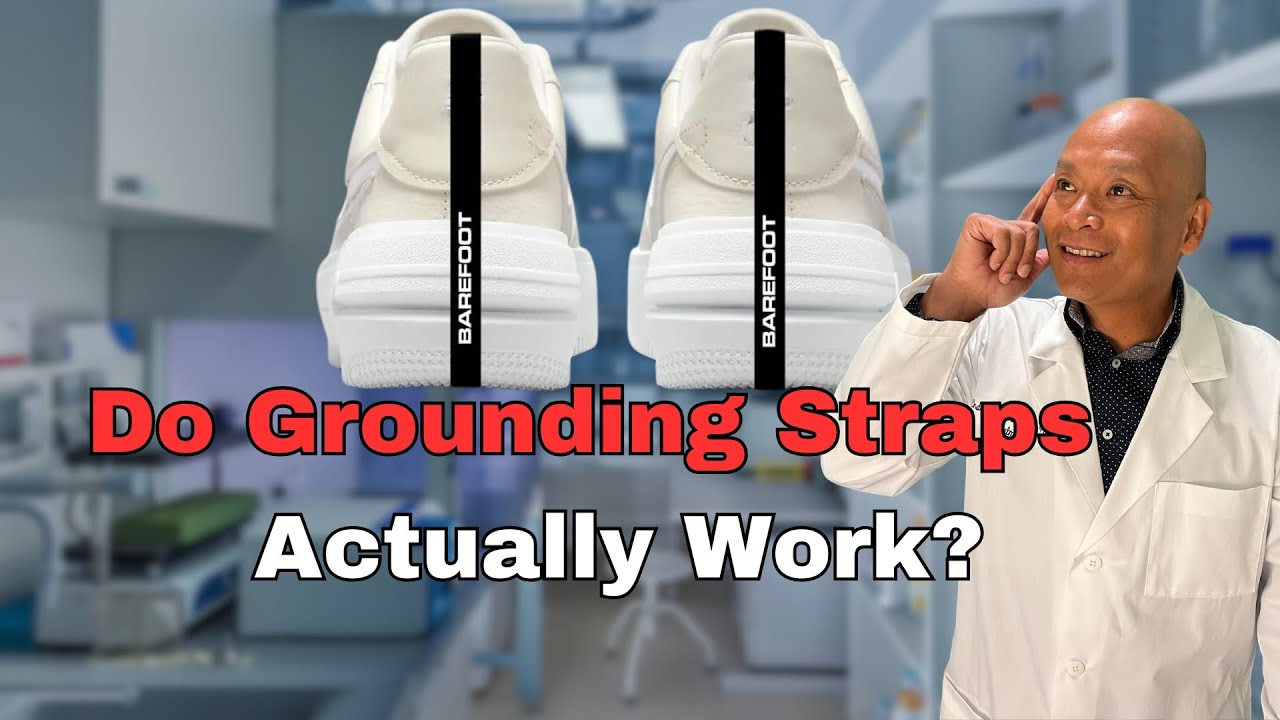If you haven’t heard, your shoes might actually be stopping you from connecting with the Earth’s natural healing energy. Intrigued by this claim, I decided to put these grounding strips to the test. Could they really connect my body to the Earth, or were these claims just another marketing gimmick?
The grounding strips looked simple—nothing too fancy. Each strip had conductive ends on both sides and was made of plastic with an adhesive backing. Attaching them seemed straightforward enough: stick the adhesive side onto the sole of the shoe, wrap it around the heel, and bring the other end into the shoe. However, my initial choice of tennis shoes proved to be a challenge. They were a bit too high, so I swapped them out for a more suitable pair of shoes with a flatter profile.
The real test began once I attached the strips. I had a voltmeter handy to verify if these grounding strips could actually ground the human body. Not just any voltmeter, though; it had to be sensitive enough to detect even small millivoltage changes. Armed with my multimeter and some accessories, I got to work measuring my body voltage.
For a more practical test, I headed outdoors. With my multimeter set up, I first measured my body voltage while barefoot on grass. This confirmed that grass is an excellent conductor for grounding. Next, I tried wearing socks and shoes with the grounding strips. While standing on my tiptoes (so the strips weren’t making contact with the ground), my body voltage soared to over 2.3 volts AC. When I put my heels down, allowing the grounding strips to touch the grass, my body voltage dropped to 1.7 volts. This was a notable improvement, but I wasn’t satisfied yet.
To enhance the connection, I removed my socks and went barefoot inside the shoes. Without the insulating layer of socks, my skin directly contacted the grounding strips. The result? My body voltage plummeted to less than 0.5 volts AC. This was the clearest indication that the strips worked, but their effectiveness was dependent on direct contact with the skin and the ground.
This test raised an interesting question: Can you ground yourself on surfaces other than grass? Many people wonder about concrete, for instance. The answer is yes, concrete can conduct grounding energy, though it’s less effective than grass. Standing barefoot on concrete, my body voltage dropped to under 0.5 volts AC, similar to the results with the grounding strips. However, other surfaces didn’t perform as well. For example, standing on dried wood chips or gravel barely reduced my body voltage, even when the materials were wet. This confirmed that stone and gravel aren’t ideal for grounding.
The grounding strips proved their worth by significantly lowering my body voltage. That said, I have some concerns about their durability. Being made of simple plastic, I wonder how long they’ll hold up under regular use. A potentially better alternative is earthing shoes. These shoes are specifically designed for grounding and are far more durable than adhesive strips. In fact, I’ve already ordered a pair and can’t wait to test them out.
Reflecting on all of this, I’ve realized that grounding is an intriguing way to connect with the Earth’s energy, but it’s not just about walking around outside. For me, the most impactful way to ground has been sleeping grounded. Since 2018, I’ve been using an earthing mattress cover, and it’s been a game changer. The quality of my sleep has improved dramatically, and I’ve noticed a host of health benefits along the way.
If you’re curious about the science behind grounding, I encourage you to explore it further. There’s a growing body of evidence suggesting that grounding can reduce inflammation, improve sleep, and enhance overall well-being. Whether it’s through grounding strips, earthing shoes, or a mattress cover, finding a way to incorporate grounding into your daily routine might be worth considering.
If you’re interested in grounding, there are plenty of resources available to help you get started. And if you’ve already tried it, I’d love to hear about your experiences. Don’t forget to subscribe if you found this journey into grounding insightful. Until next time, take care and stay grounded!


Leave a Reply